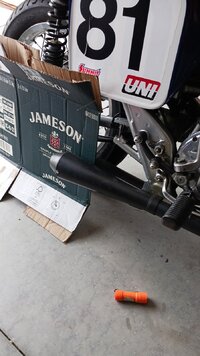I thought I’d make one more video before tearing the bike apart. This one deals with carb syncing with a manometer.
This manometer has a relatively large body of water, and the vacuum lines are fitted with a .6mm jet. This has the effect of slowing down the movement of water stabilising the readings and making the device extremely accurate. Just a miniscule turn of either idle screw or throttle adjustment screw greatly effects the fluid levels.
I have great trouble with my fingers, so you'll notice me changing hands frequently trying to turn the adjustment screws. I also turned the adjustment screws the wrong way a few times, putting the levels out.
This manometer has a relatively large body of water, and the vacuum lines are fitted with a .6mm jet. This has the effect of slowing down the movement of water stabilising the readings and making the device extremely accurate. Just a miniscule turn of either idle screw or throttle adjustment screw greatly effects the fluid levels.
I have great trouble with my fingers, so you'll notice me changing hands frequently trying to turn the adjustment screws. I also turned the adjustment screws the wrong way a few times, putting the levels out.

